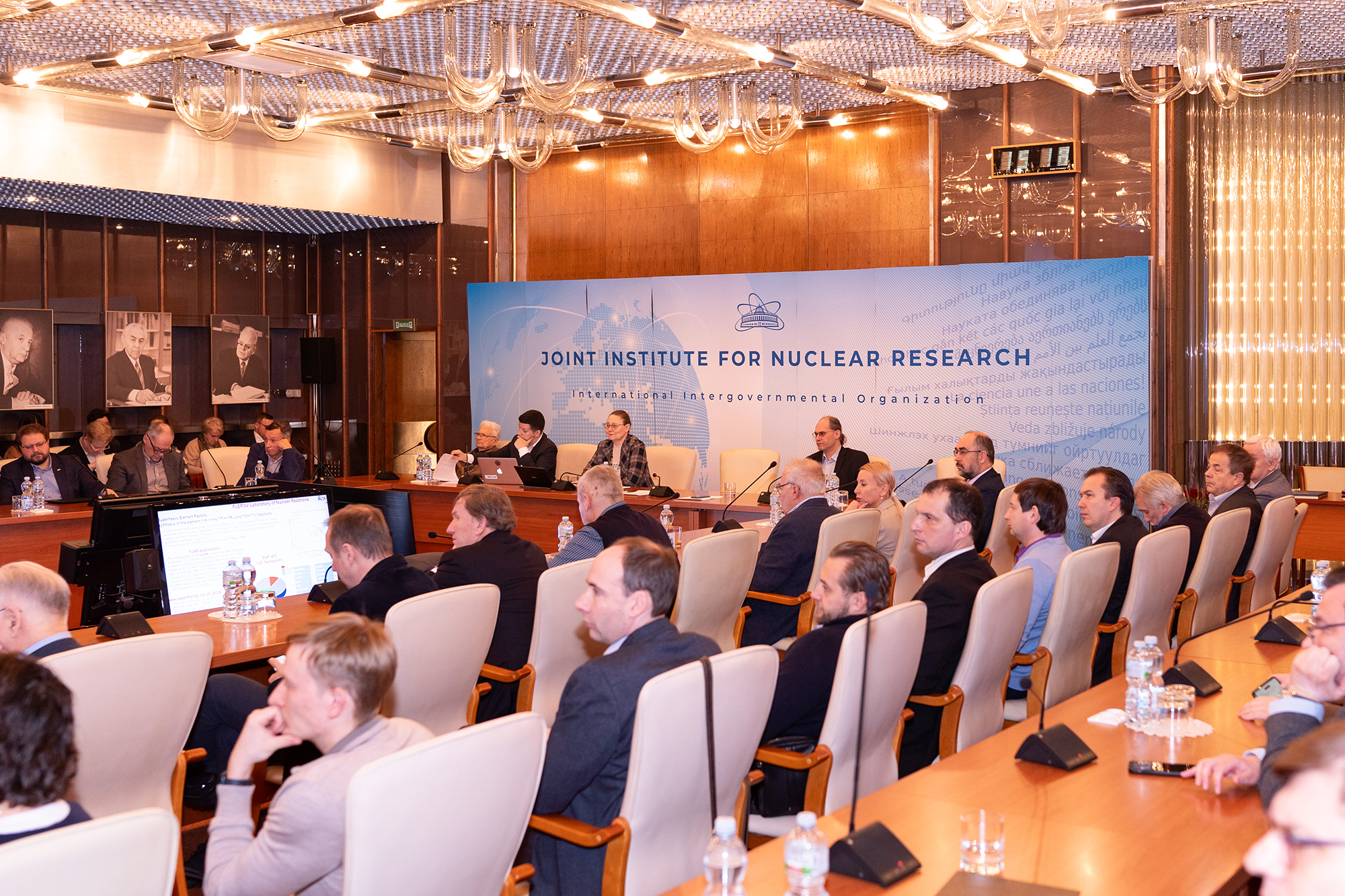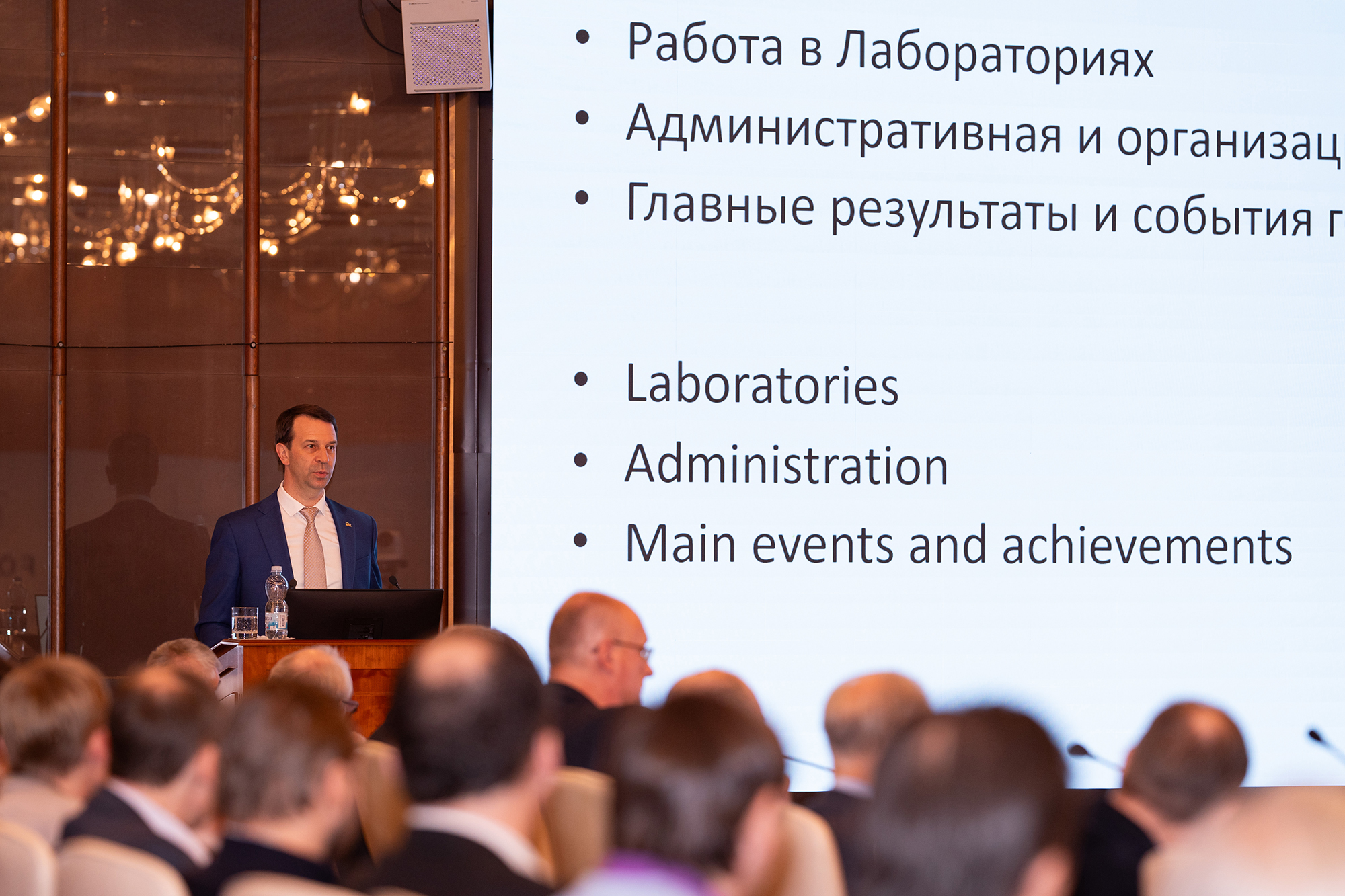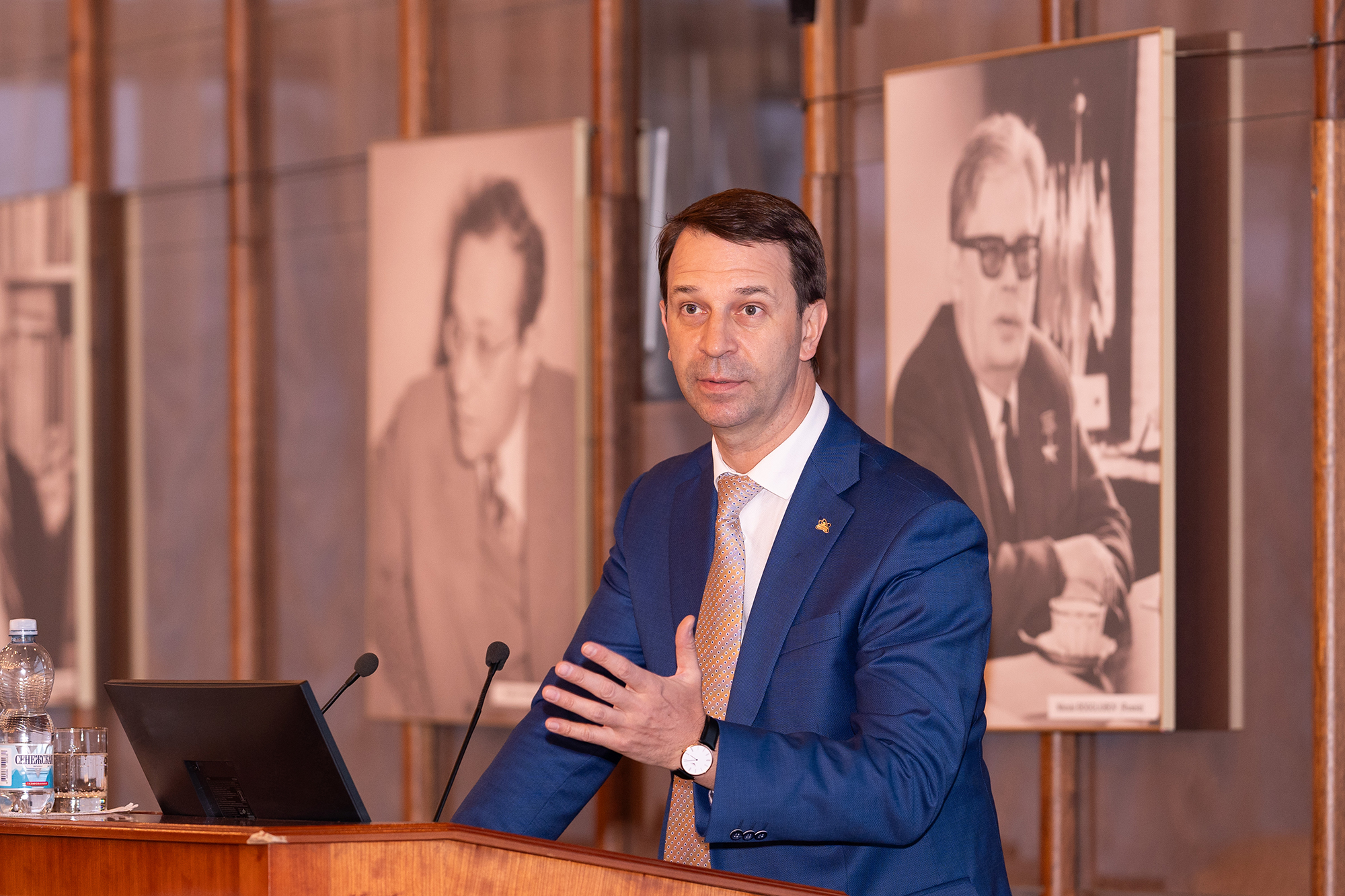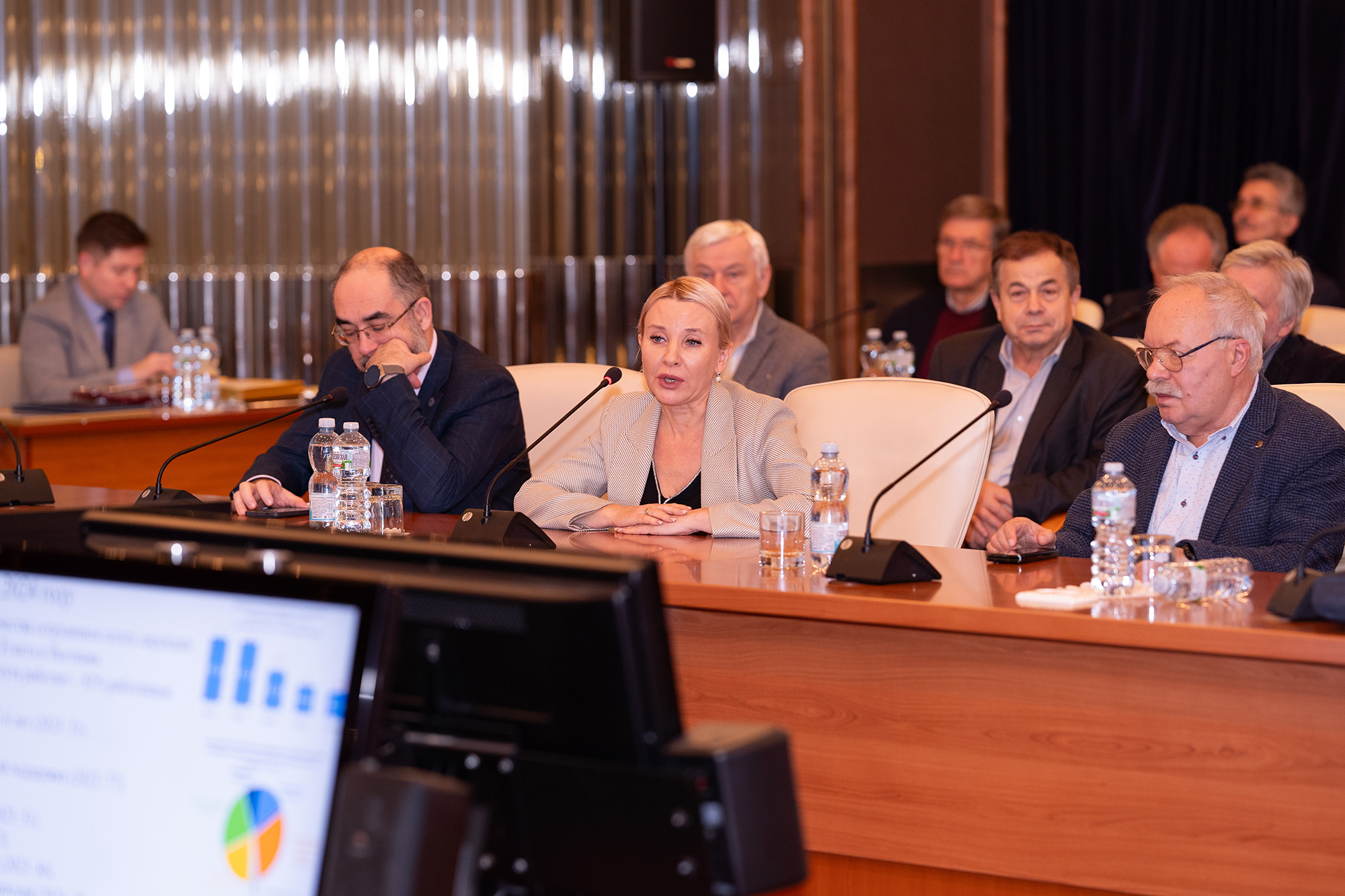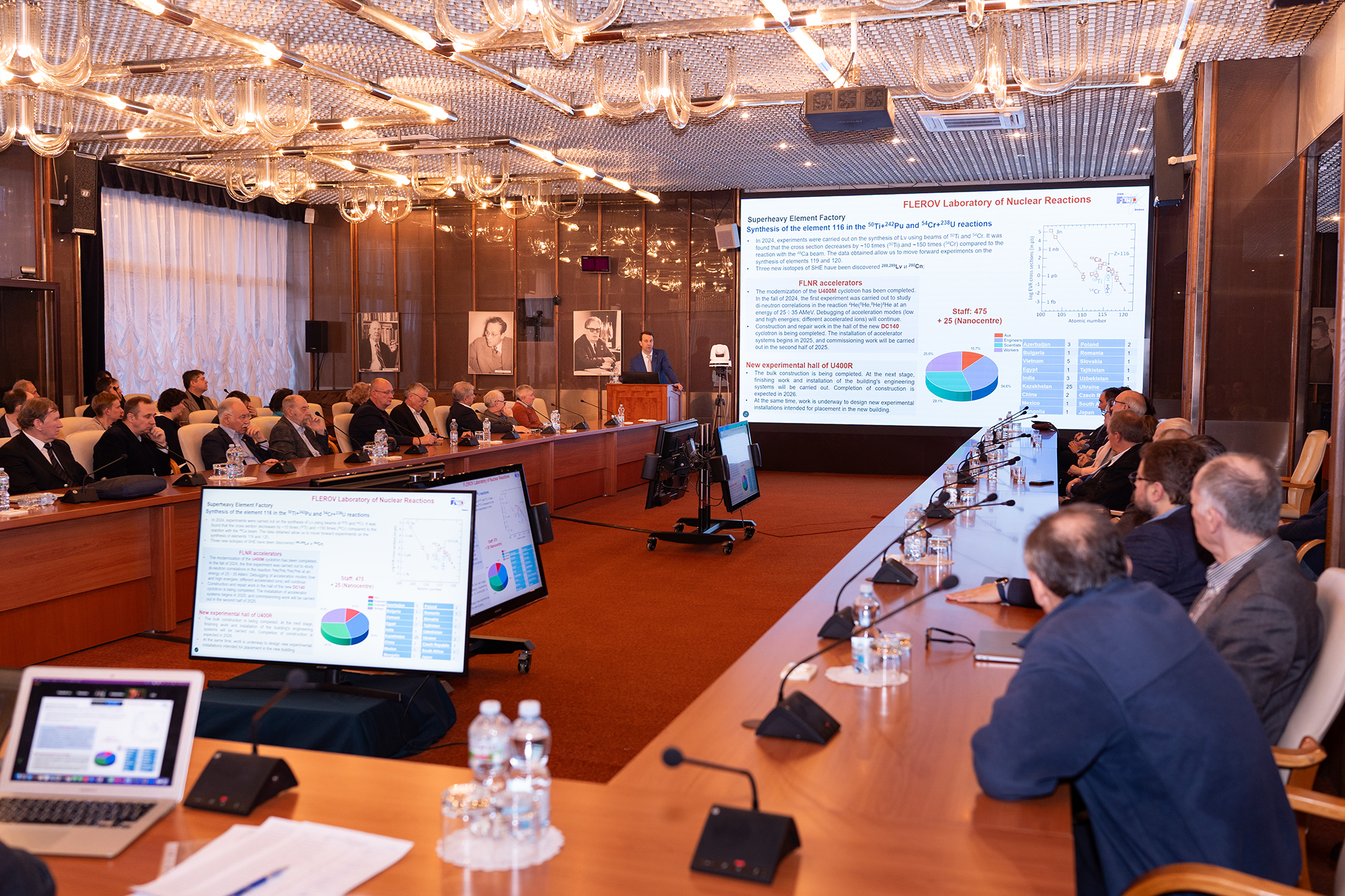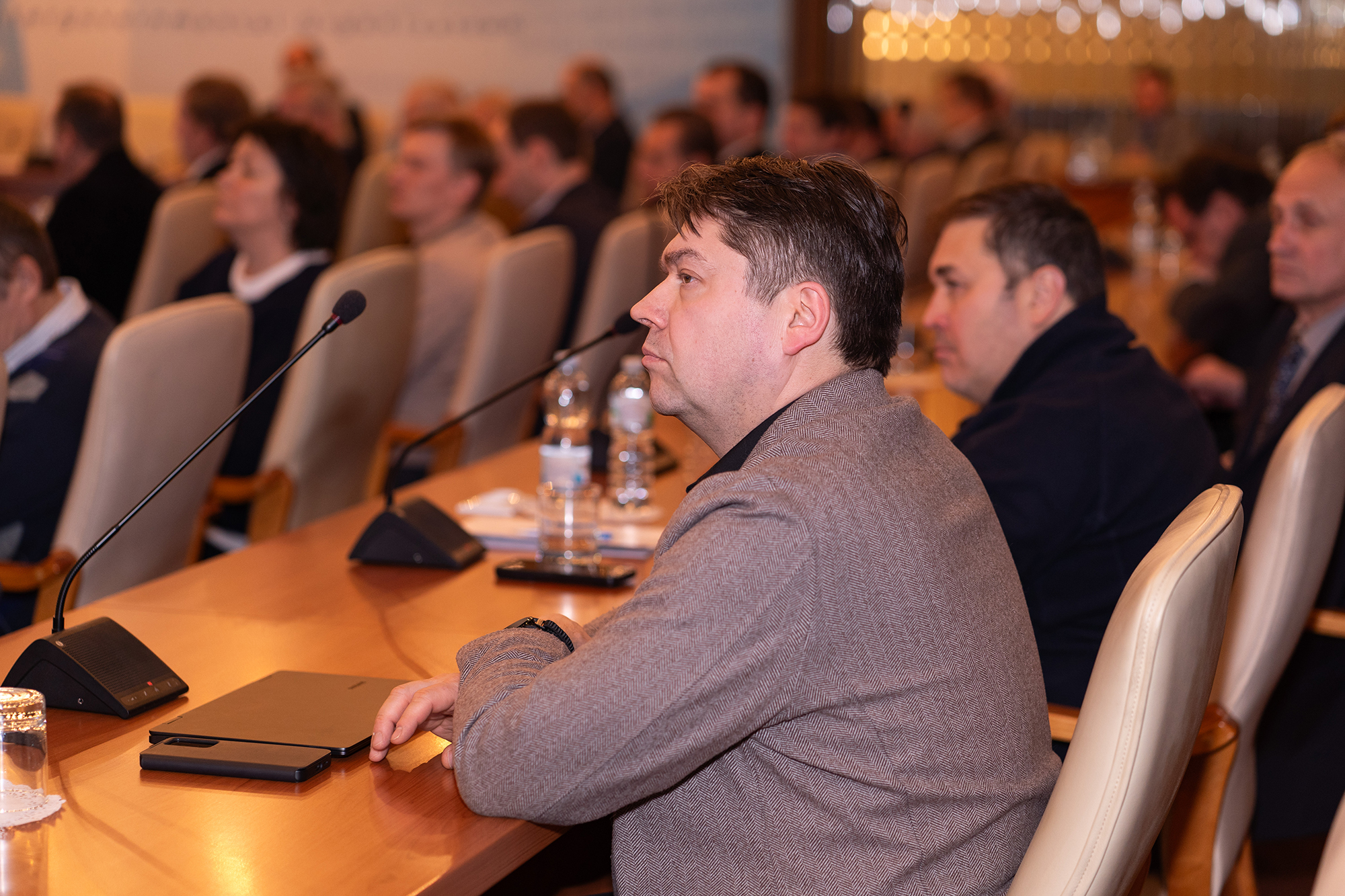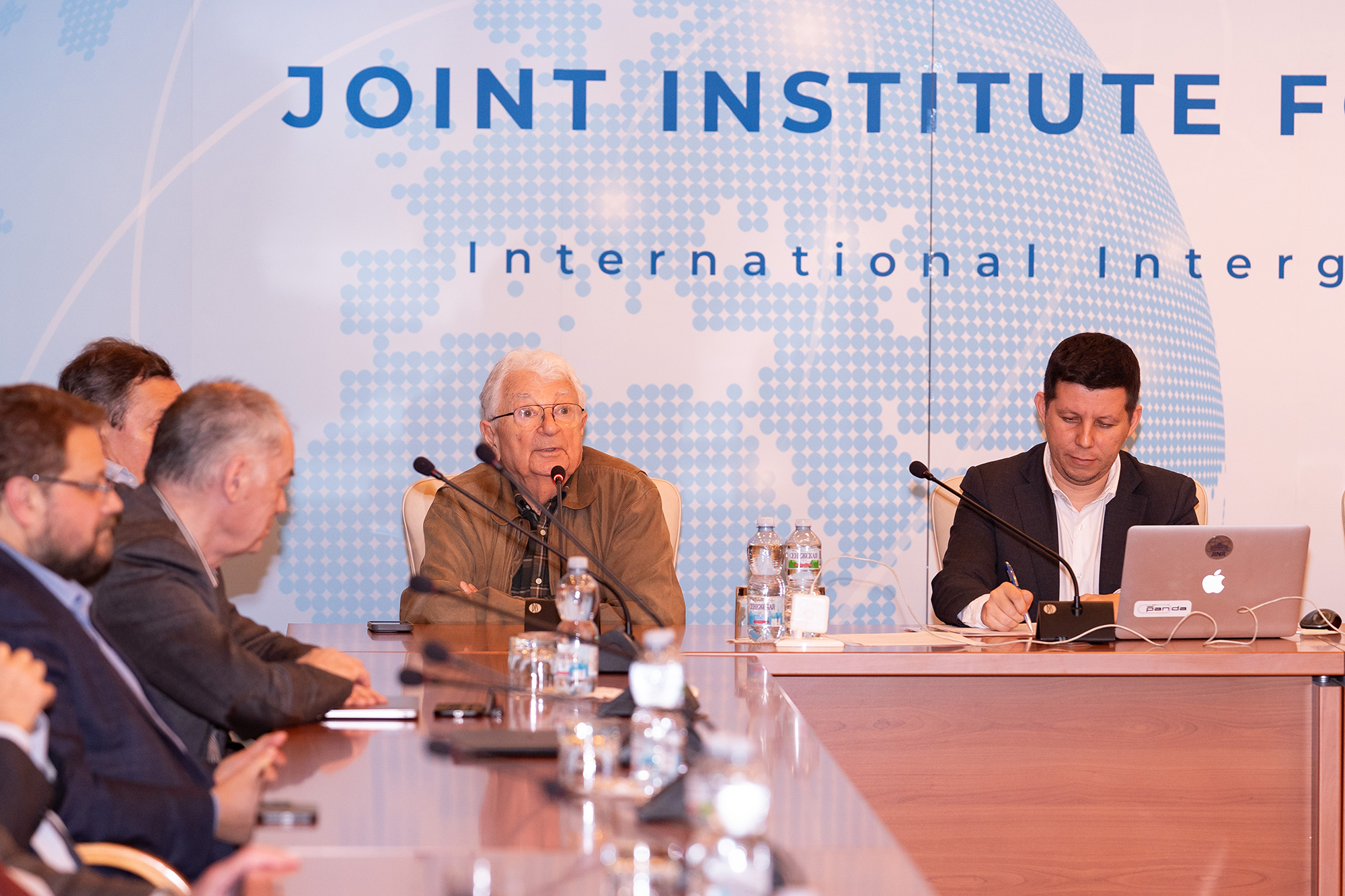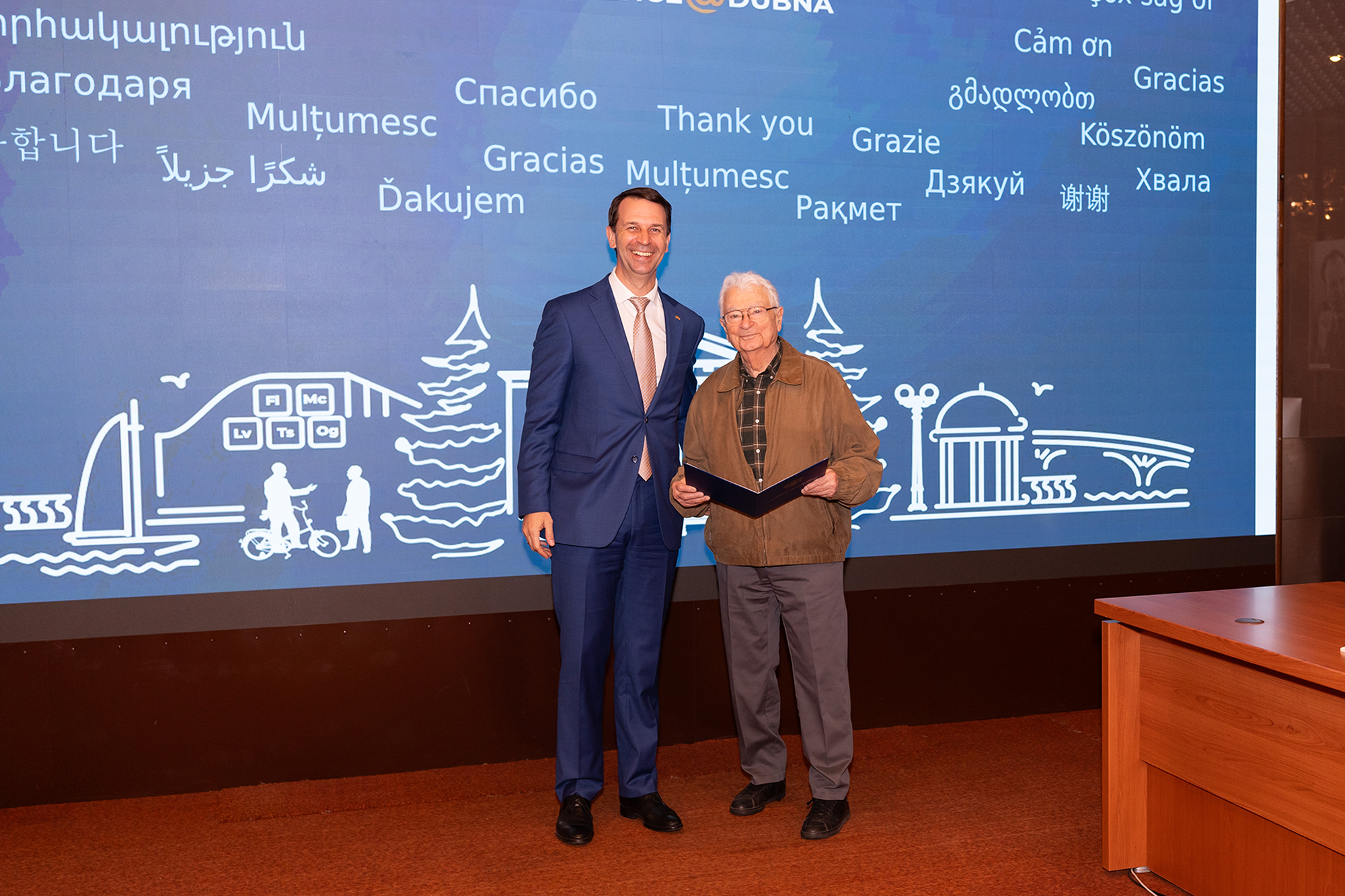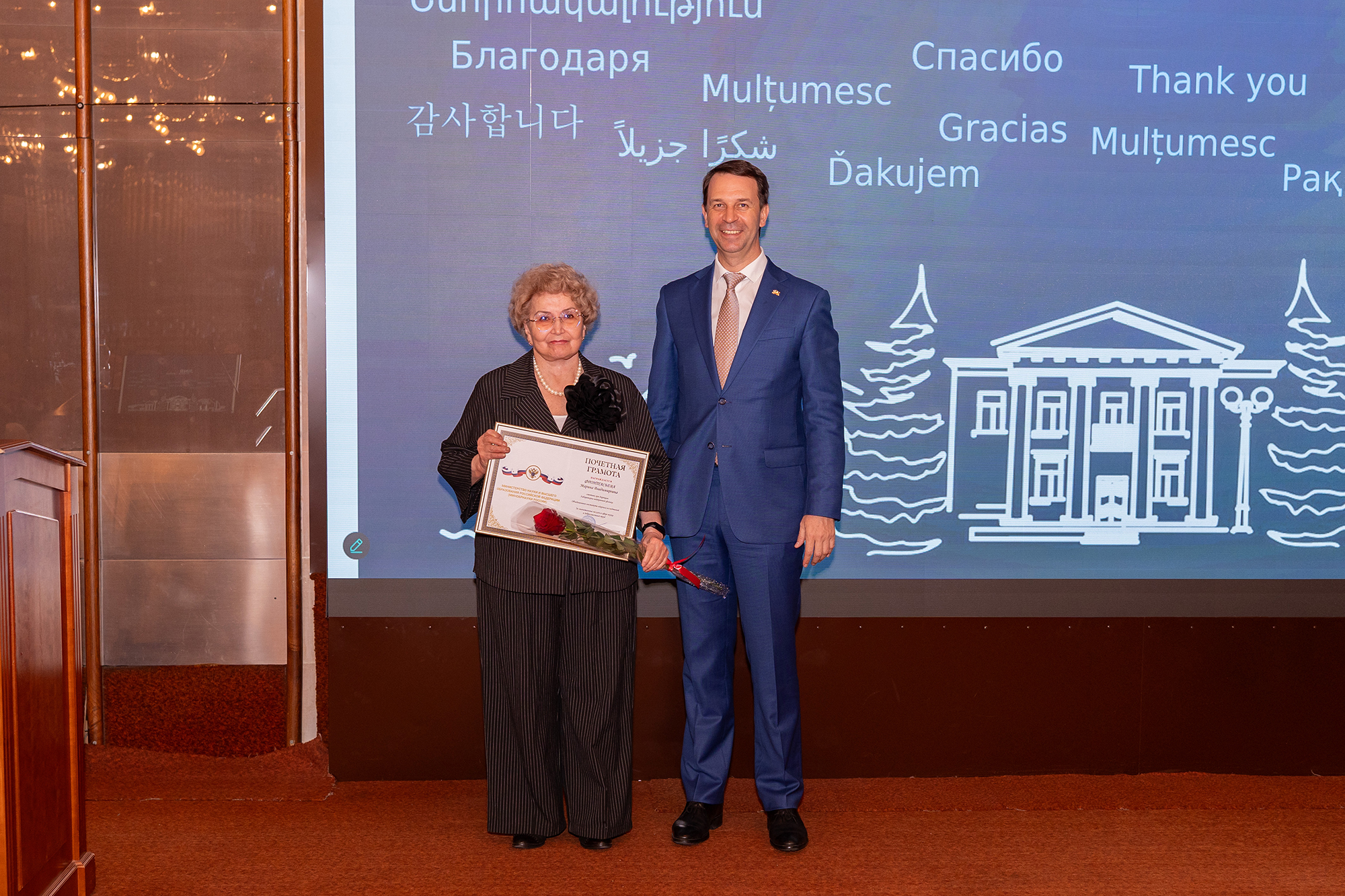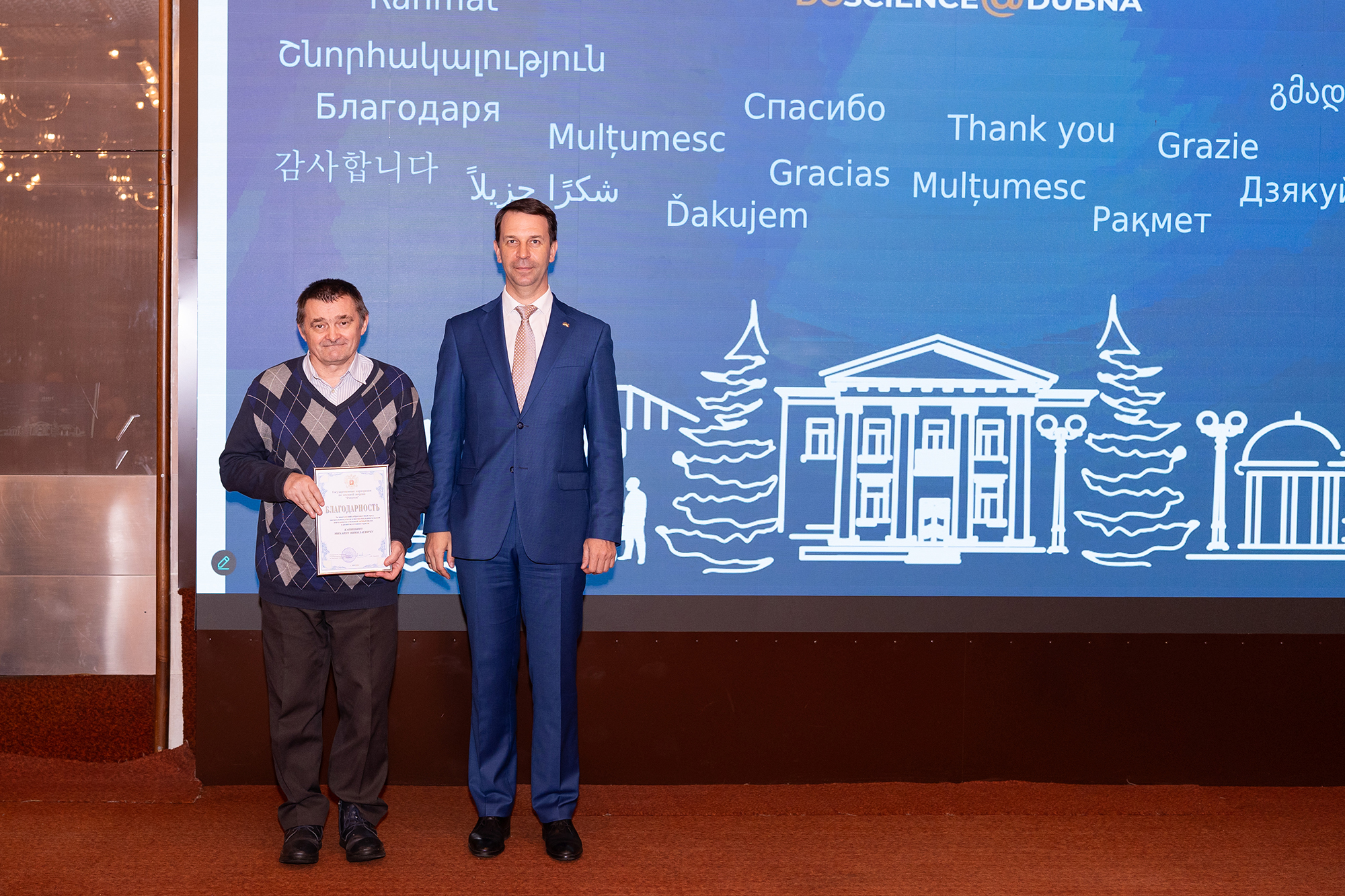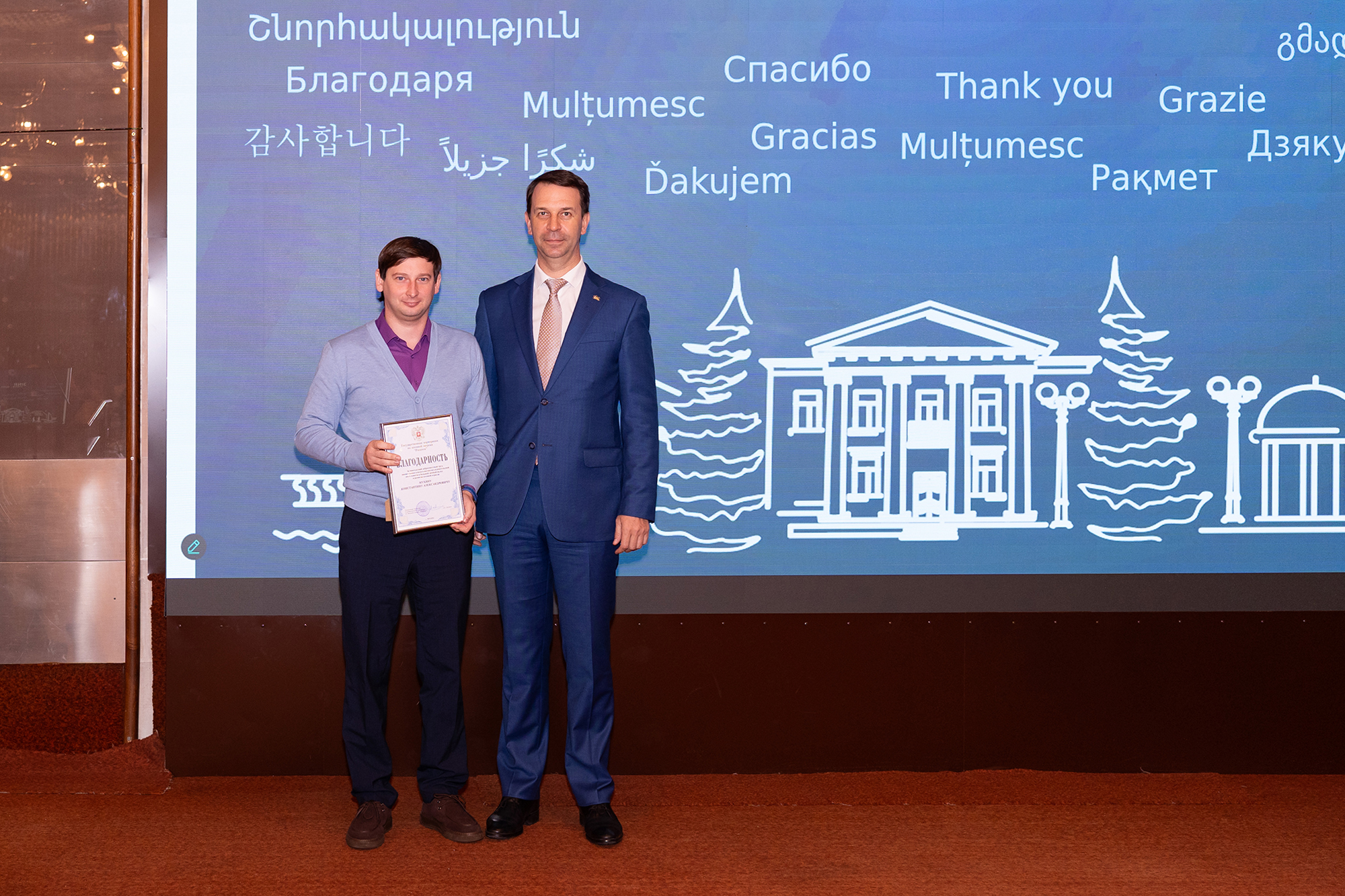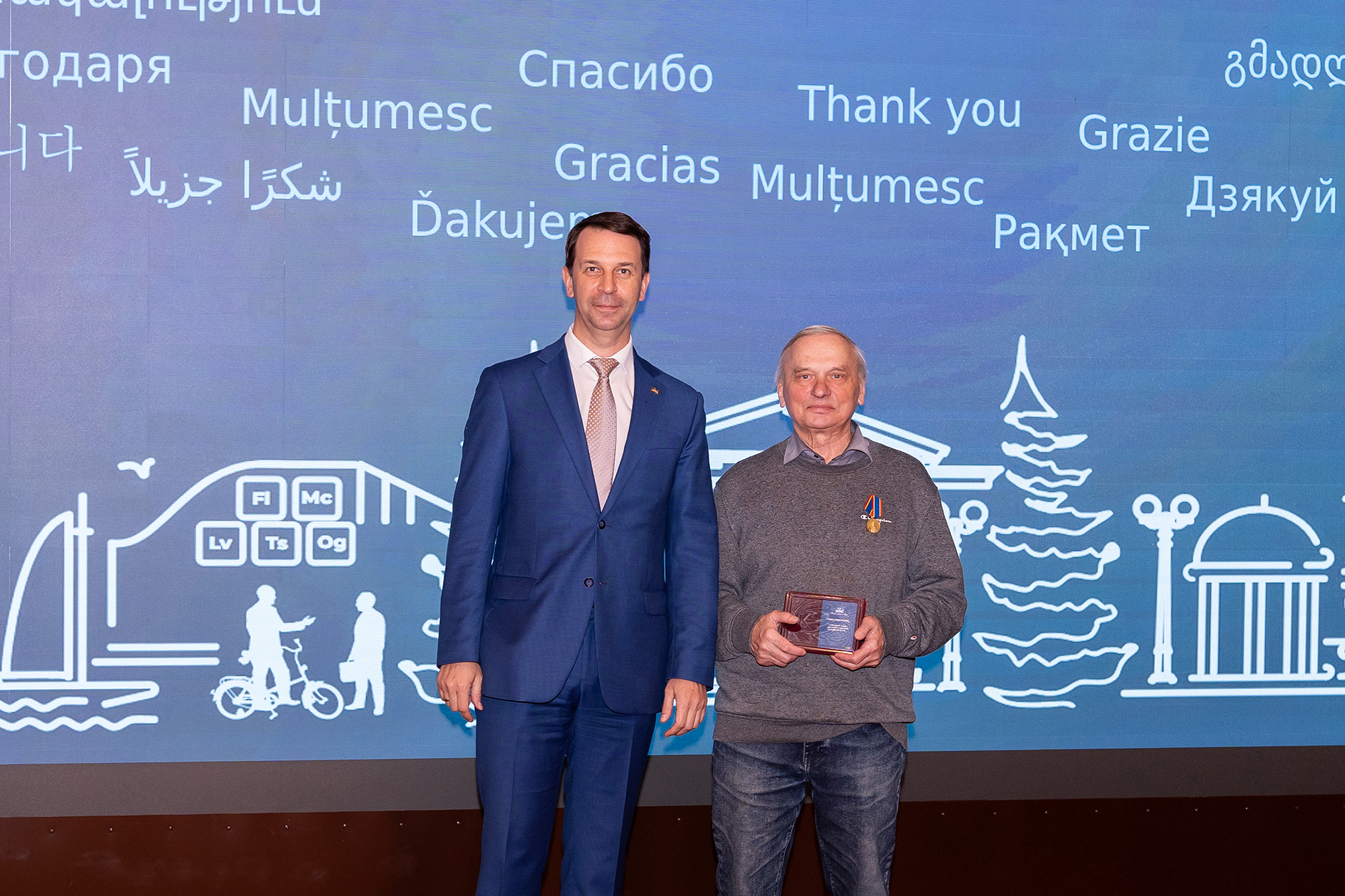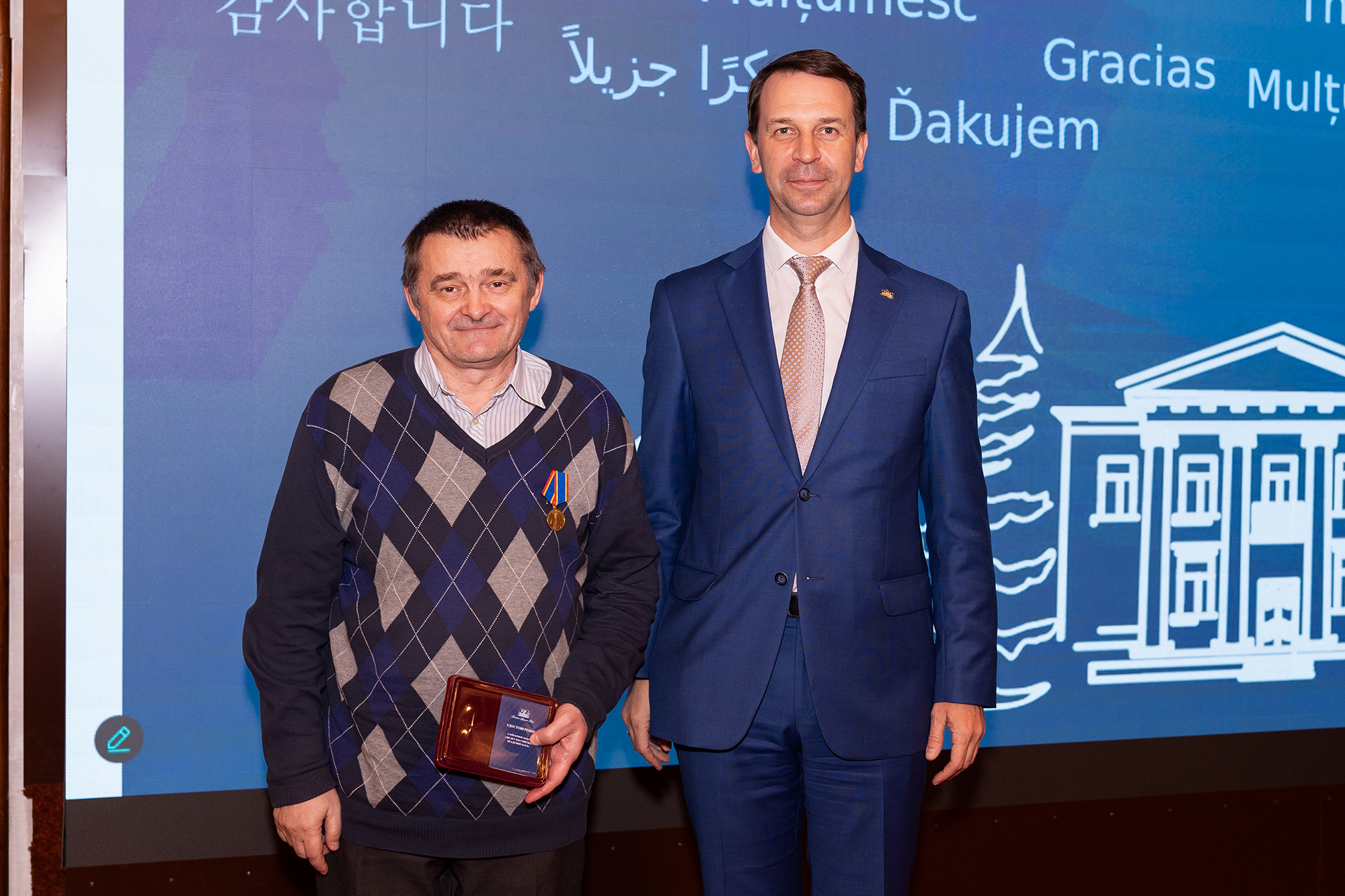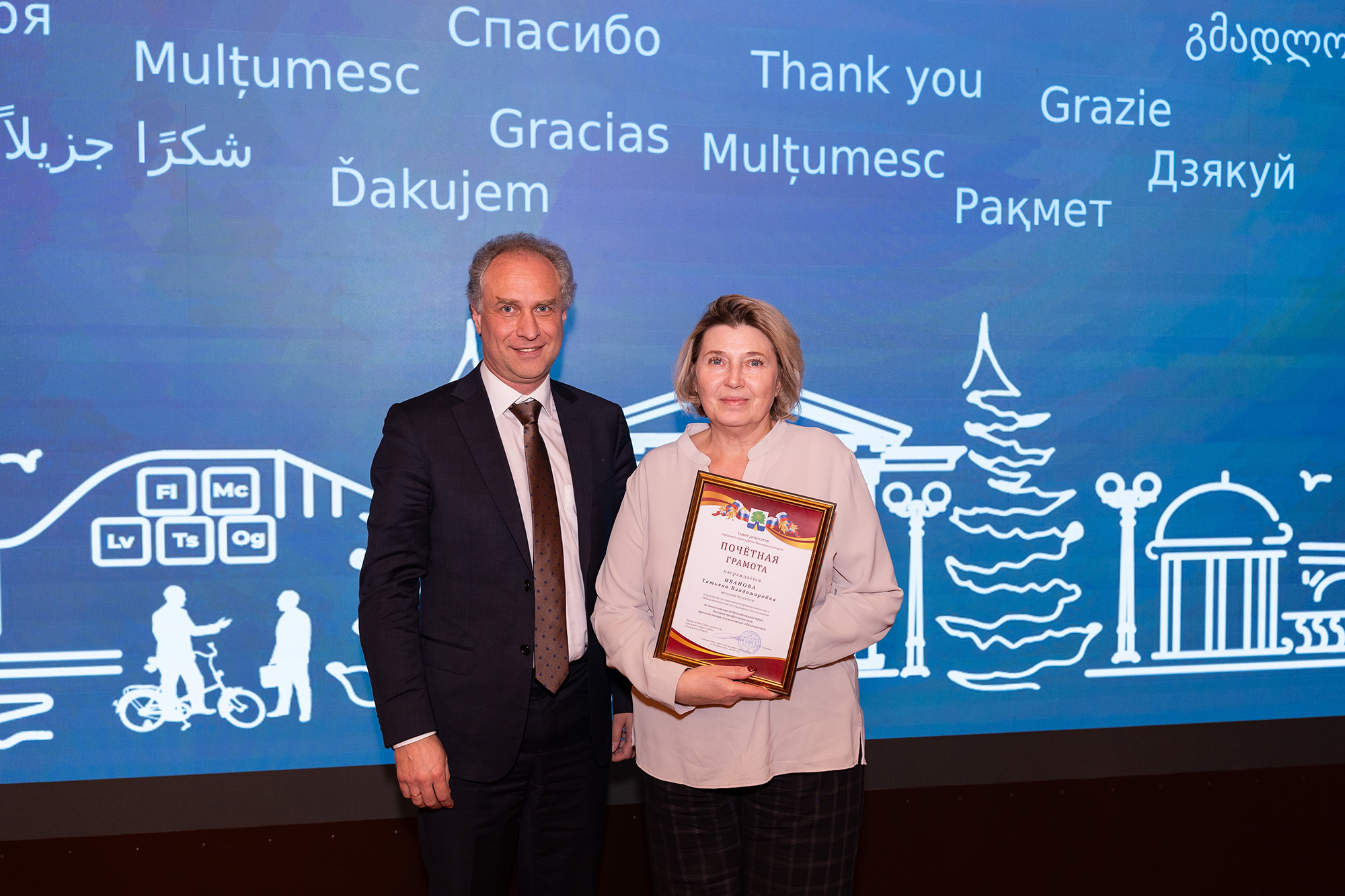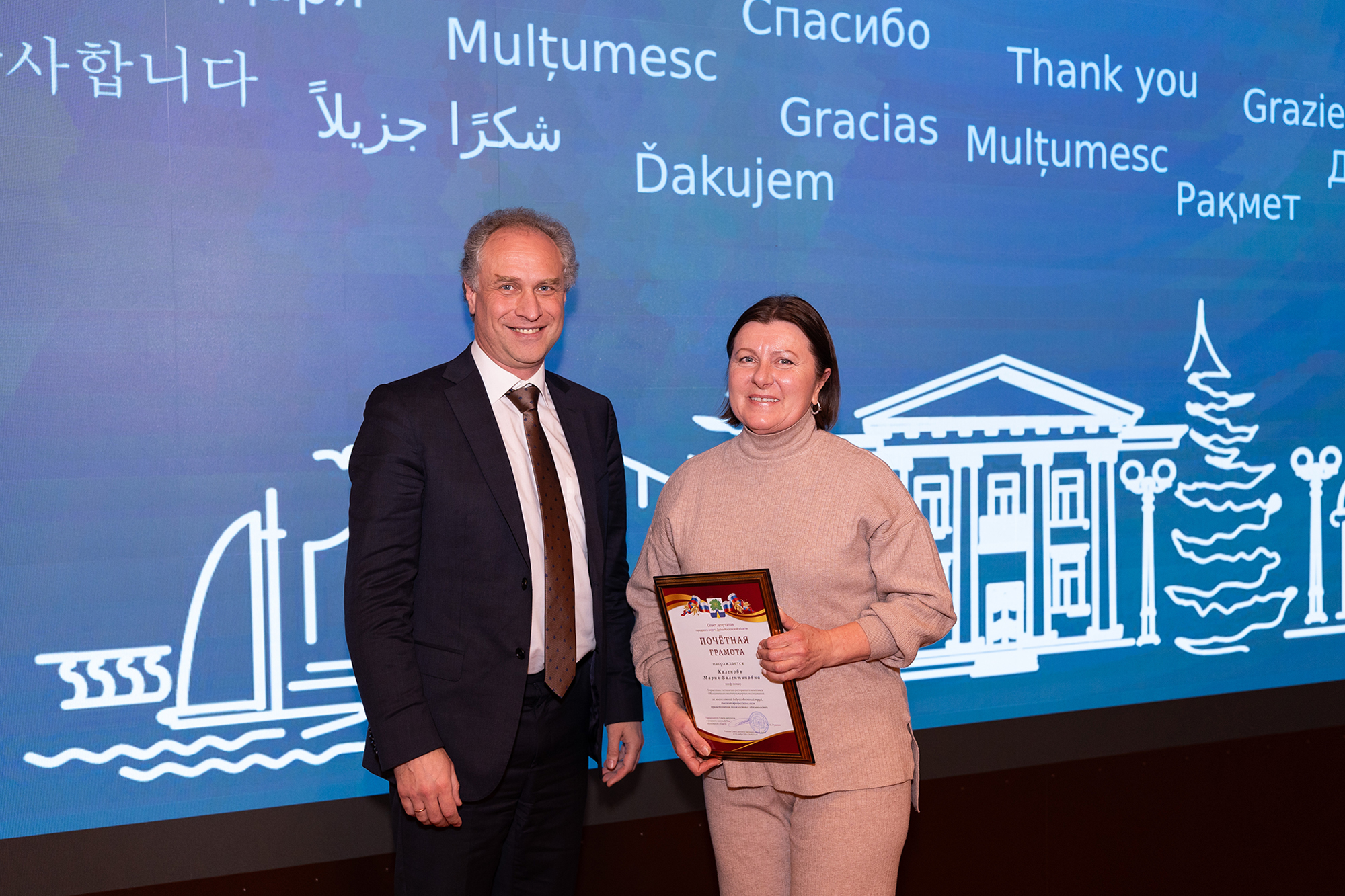JINR Science and Technology Council reviewed results of past year
News, 27 December 2024
On 20 December, the JINR Science and Technology Council held its final 2024 meeting at the International Conference Centre to discuss the results of the year’s work and prospects for further development of the Institute. The event concluded with a ceremony of awarding JINR employees for their honest work and contribution to the development of science.
Science and Technology Council Chair Elena Kolganova opened the event. Among the topics of the latest JINR STC meetings, she highlighted issues related to international cooperation, the Joint Institute personnel policy, and the development of Dubna State University and the programme of activities of the JINR University Centre (UC). STC Chair acknowledged the continuous improvement of the work of all Institute’s offices and departments.
Director of the Joint Institute for Nuclear Research, Academician of the Russian Academy of Sciences Grigory Trubnikov informed the members of the Science and Technology Council of the year’s main results in the scientific and administrative spheres of the JINR activity. His presentation covered the most important achievements of the laboratories and analysed the results of the work of the JINR offices and departments.
In the Institute’s laboratories
Researchers at the Laboratory of Radiation Biology continue to represent JINR at many international scientific forums. In 2024, the Laboratory extensively participated in the organization and work of several major events, such as the 23rd International Youth Scientific School of Radiation Biology in Obninsk (Russia), the Current Problems in Radiation Biology International Conference in Dubna, and the VAST-JINR Workshop on Nuclear Medicine in Hanoi (Vietnam). The development of new binary methods of radiation therapy of cancerous tumours using radiosensitisers and the international recognition of the contribution of the Laboratory’s scientists to the development of the Geant4-DNA Software Package for radiobiological modelling at the cellular level were highlighted as one of the main LRB achievements.
Many bright events took place at the Laboratory of Nuclear Reactions at JINR. In the spring, the experimental programme of the Superheavy Element Factory was successfully implemented to irradiate 242Pu and 238U targets with 50Ti and 54Cr beams respectively, resulting in six new livermorium synthesis events. In addition, three new isotopes were discovered: 288, 289 Lv, and 280 Cn. The results obtained bring the FLNR scientists closer to carrying out experiments on the synthesis of elements 119 and 120.
In 2024, the modernisation of the U400M Cyclotron was completed, and the facility was launched. In the first experiments, the dineutronic correlations in the 4He(8He,8He)4He reaction were studied at 25-35 AMeV. Construction and installation works are nearing completion in the hall of the DC-140 Accelerator Complex. The researchers expect to put it into operation in the second half of next year and obtain the first ion beams. The main phase of the U-400R Accelerator construction is nearing completion. Finishing works and installation of the building’s engineering systems will begin in the near future. The construction is scheduled to finish in 2026. New experimental facilities for the accelerator’s hall are being designed at the same time.
The Director of the Joint Institute noted the successful organization of the 50 Years of Cold Fusion International Conference, held on the initiative of the author of the discovery of a new class of nuclear reactions, FLNR Scientific Leader, Academician Yuri Oganessian. The event in Armenia brought together representatives of all the leading scientific centres specialising in superheavy element synthesis.
Grigory Trubnikov noted that the Laboratory of Theoretical Physics is “a true factory of scientific thought” and “an important think tank for all projects of the Joint Institute”. This year, BLTP organized 11 major events, including the international Nucleus-2024 Conference, a scientific session of the Nuclear Physics Section of the Russian Academy of Sciences, and an international workshop on physics of strongly interacting systems in China. The effectiveness of the laboratory’s scientific work is confirmed by the defence of five Candidate’s and three Doctoral dissertations and the publication of two monographs and more than 240 articles in peer-reviewed scientific journals.
In November, the Institute of Theoretical Physics of the Chinese Academy of Sciences (ITP CAS) and BLTP JINR signed an important cooperation agreement in China. It provides for the expansion of scientific contacts between employees of the organizations, joint research and scientific publications, and regular exchange of visits by researchers, graduates, and students.
The Laboratory of Neutron Physics continues preparations for the launch of the IBR-2 Pulsed Research Reactor scheduled for the first half of 2025. The JINR Director stressed that although the main technological work is almost finished, the commissioning of all scientific facilities of the reactor is delayed due to additional requirements of the Federal Service for Environmental, Technological, and Nuclear Supervision. Meanwhile, new detectors were installed in the HRFD and DN-6 Diffractometers. A prototype of a new facility for inelastic neutron scattering, the BJN Spectrometer, is ready for testing.
FLNP continues to conduct extensive scientific activities in 2024. In terms of applied research, the Laboratory’s team is intensively studying cathode materials for promising sodium-ion batteries. Employees of the Neutron Activation Analysis and Applied Research Sector received medals at the international Euroinvent-2024 Invention Exhibition for developments in life sciences.
The MLIT JINR Multifunctional Information and Computing Complex (MICC) processed 40 petabytes of incoming data this year, ensuring the completion of more than 10 million tasks through the Tier-1 and Tier-2 grid infrastructure, along with about 3.8 million tasks on the Govorun Supercomputer. “MICC not only provides high computing power for JINR’s needs, but also actively participates in CERN experiments, proving the effectiveness of the Laboratory of Information Technologies,” Grigory Trubnikov noted.
In 2024, MLIT researchers defended two Candidate’s theses and published more than 150 scientific papers, including three monographs and over 100 articles prepared as part of international collaborations. In addition, the Laboratory organized two major events, the MPQIT-2024 Workshop and the MMCP-2024 International Conference, and successfully held the Autumn School of Information Technologies with the participation of about 60 students from Russian universities.
The main achievement of the Laboratory of Nuclear Problems, which celebrated its 75th anniversary this year, was the successful completion of another expedition to build the Deep Underwater Baikal-GVD Neutrino Telescope. Currently, 13 clusters consisting of more than 4,000 optical modules are installed on Lake Baikal. During the next expedition, 700 more modules are planned to be added. An important scientific result was the confirmation of Baikal-GVD’s high sensitivity, four times higher than that of the IceCube Neutrino Observatory. This year, the Baikal telescope detected astrophysical neutrinos with energies exceeding 200 TeV.
In addition, Grigory Trubnikov noted the broad participation of the DLNP employees in the DANSS and DANSS2 Experiments at the Kalinin Nuclear Power Plant, the SPD Collaboration at the NICA Accelerator Complex, and the modernisation of the JUNO Detector. Active work on the creation of the MSC-230 Medical Cyclotron continues. A commissioning run of the LINAC-200 Electron Accelerator is set to take place by the end of this year.
The Laboratory of High Energy Physics completed preparations for technological tests of the main components of the NICA Accelerator Complex. During the December commissioning run, the VBLHEP specialists successfully cooled the MPD Detector’s solenoid to operating temperatures. The ARIADNA Collaboration continues to actively develop the applied research programme at NICA. The Director of the Joint Institute expressed hope that all the work planned for 2025 on the physics run of the VBLHEP accelerator complex will be completed on schedule.
On 9 December, with the direct participation of JINR UC, the first Information Centre of the Joint Institute in the Southern Hemisphere opened at NRF: iThemba LABS, the South African accelerator centre. The centre’s activities will contribute to the development of JINR-South Africa international cooperation in science and education.
Grigory Trubnikov presented the interactive Detector Centre Web Service, designed to create and visualise a single database of technological areas of the Joint Institute’s work. The application contains information about the JINR laboratories, including available equipment, the experience of working with components and materials, and the researchers’ competencies. According to the Director of the Institute, this resource will contribute to the development of applied research and the creation of unique equipment at the request of organizations of the Member States.
The JINR Committee of Plenipotentiaries has approved a startup competition aimed at supporting innovative projects of young professionals. An expert committee for the selection of projects is scheduled to be created next year.
In 2024, the 100th defence took place during the meetings of the JINR Dissertation Councils. 26 theses were defended: 19 Candidate’s and 7 Doctoral ones. In total, 116 Dissertation Council meetings have been held since 2019, with 89 Candidate’s and 24 Doctoral theses defended.
Education
In 2024, for the first time in its recent history, the Moscow State University (MSU) Branch in Dubna accepted undergraduate students for the Physics Master’s programme. Grigory Trubnikov informed the STC participants that JINR successfully obtained the licence of the Ministry of Science and Higher Education of the Russian Federation for the Applied Mathematics and Computer Science Master’s programme. The creation of this programme at the MSU Branch in Dubna is motivated by the need to train highly qualified personnel in mathematical modelling and data processing of megascience projects using methods of big data analytics and artificial intelligence. The branch will start admitting its first students on the programme next year.
This year, more than 600 students took part in the scientific and educational events at the University Centre (internships, practical courses, scientific schools). Similar programmes were organized for teachers: about 70 people from partner institutions visited Dubna to participate in scientific schools. In total, more than 160 students took part in the START and INTEREST Programmes.
Grigory Trubnikov paid special tribute to the employees of the Department of Development and Production of the UC Educational Programmes. The educational and methodological book sets “Physics for grades 7-9. Engineers of the Future” developed by them continue to be actively introduced into the school programme in the Russian Federation. JINR UC specialists are working on the creation of similar textbooks for grades 10-11 aimed at in-depth study of the subject.
Personnel
Grigory Trubnikov emphasised the key role of expanding the Institute’s workforce. As of 20 December 2024, the number of JINR personnel was 5065 with an average age of 51. Over the past year, there have been increasing trends in the number of research trainees (64 in 2024 vs 51 in 2023), postdocs and fellows (18 in 2024 vs 7 in 2023), and associate staff (102 in 2024 vs 80 in 2023). Thus, the primary task for the next year is still to ensure an increase in the number of highly qualified personnel.
“We demonstrate high standards of social support for our employees, standing out from other institutions in Dubna. JINR actively implements a voluntary health insurance programme, provides loans and assistance in difficult life situations, which confirms the careful attention to the personnel well-being and the Institute’s social policy”, the Director of the Joint Institute underlined.
Social infrastructure
JINR’s social infrastructure underwent significant improvements. The major renovation of the Dubna Restaurant and the third floor of the International Conference Centre (ICC) finished. An interior design of the exhibition hall on the second floor was developed for the ICC. In November, after the installation of the necessary equipment, a new sports facility – a climbing gym – opened. The façade of the JINR Sports Club was renovated, including replacement and insulation of windows.
A car park with 137 lots was arranged near the VBLHEP security checkpoint; the car park near the DLNP checkpoint was extended by 30 lots.
The reconstruction of the Main Dubna Distribution Substation No. 1 at the VBLHEP site will finish in December. The substation’s power output will be increased from 22.4 MW to 40.8 MW. The reconstruction of the Sestra Distribution Substation No. 2 at the DLNP site continues. The works are to be completed in the fourth quarter of 2025, resulting in a power output increase from 29.5 MW to 39.2 MW.
Grigory Trubnikov noted the crucial importance of JINR’s cooperation with the Dubna administration. The Institute continues to provide the city district with solid financial support. The allocated funds are aimed at modernising the infrastructure of educational institutions, supporting teachers (competitions, grants), helping veterans and low-income people, supporting children’s health facilities, and much more. The JINR Director expressed gratitude to the city administration for the continued fruitful collaboration.
Key events of the year
In conclusion of his speech, Grigory Trubnikov outlined highlights in the life of the Joint Institute for Nuclear Research:
- extension of the agreement on scientific cooperation with CERN;
- meeting of the BRICS Working Group on Research Infrastructures at JINR;
- signing of a new cooperation agreement between JINR and China;
- visit of the Minister of Science and Technology of Vietnam to JINR;
- signing of a new cooperation agreement with the Brazil’s National Nuclear Energy Commission;
- session of the JINR Committee of Plenipotentiaries in Belarus.
The main event of 2024 at JINR was the visit of the President of the Russian Federation Vladimir Putin on 13 June 2024, during which the technological launch of the NICA Collider was initiated. Grigory Trubnikov emphasised that the support provided by the government of the Institute’s residence country plays a major role in the current situation.
Awards
The final item of the agenda of the last 2024 meeting of the Science and Technology Council was the ceremony of awarding employees of the Joint Institute.
FLNR JINR Scientific Leader Yuri Oganessian was given the Letter of Gratitude of the President of the Russian Federation on the occasion of the 300th anniversary of the Russian Academy of Sciences for his contribution to the development of science and many years of fruitful work.
Awards of the Ministry of Science and Higher Education of Russia:- Advisor to the FLNP JINR Directorate Marina Frontasyeva received the Certificate of Merit for her significant achievements in science and honest work;
- a VBLHEP JINR leading researcher Vyacheslav Zhabitsky was given a Letter of Gratitude for many years of his honest and successful work.
- FLNR JINR Chief Technical Specialist Georgy Gulbekyan was awarded the II class Badge of Merit for his contribution to the development of the nuclear industry;
- a BLTP JINR leading researcher Elena Kolganova received the Certificate of Merit for many years of honest work, successes in research and scientific work, and her personal contribution to the development of the nuclear industry;
- VBLHEP JINR Deputy Chief Engineer Konstantin Mukhin was given the Letter of Gratitude of the Rosatom State Corporation’s General Director.
For their significant contribution to the scientific and technological development of JINR’s residence country and the assistance provided to the Russian Academy of Sciences in solving its tasks, the Jubilee Medal marking 300 years of the Russian Academy of Sciences was awarded to:
- a BLTP JINR chief researcher Mikhail Ivanov;
- a VBLHEP JINR department head Mikhail Kapishin;
- a BLTP JINR leading researcher Elena Kolganova;
- a VBLHEP JINR sector head Oleg Rogachevsky.
For many years of their honest work and high professionalism in performing official duties, the Honorary Diplomas of the Council of Deputies of the Dubna city district were presented to:
- a leading JINR accountant Tatyana Ivanova;
- Head Chef of the JINR Hotel and Restaurant Complex Management Office Maria Kalenova.
Twenty four employees of the Joint Institute for Nuclear Research received JINR Letters of Gratitude for the preparation and holding of special events marking the technological launch of the NICA Complex.
“Each of you has made a huge contribution to our shared success. The past year has been really challenging, but thanks to your high professionalism and cohesion, not only have we overcome all difficulties, but also achieved outstanding results, ensuring the further dynamic development of the Institute,” Grigory Trubnikov concluded.
